It is already difficult to surprise anyone with an exotic monitor lizard in the house – these giant lizards are increasingly settling among people. In captivity, they demand a lot of attention to themselves, but they are not particularly loyal. There are frequent cases when the sudden aggression of a reptile pet ended for the owner with severe inflammation at the site of the bite or sepsis. How to protect yourself from a domesticated reptile and at the same time create comfortable living conditions for it, you will learn from the article, as well as get acquainted with one of the most common varieties among breeders – Savannah Monitor.
Appearance and Dimensions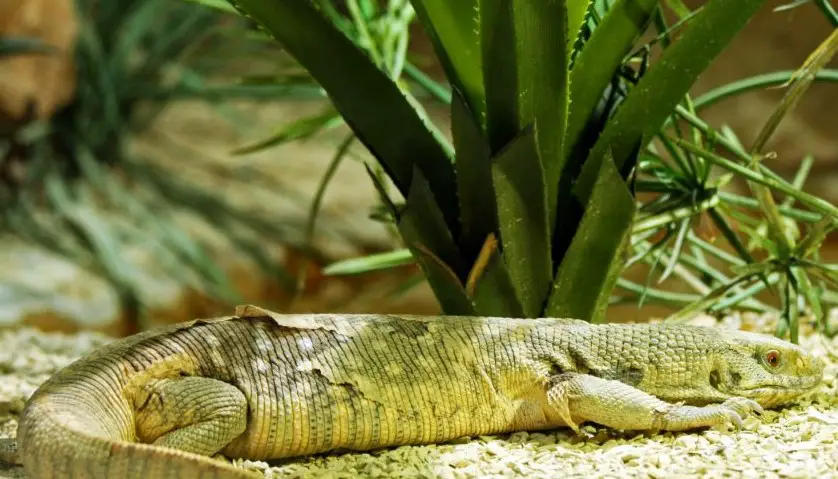
According to experts, this type of reptile is the most suitable for home keeping, as it is characterized by peacefulness and ease of adaptation. However, you should take into account the individual characteristics of the temperament of the ward and never forget about the precautions.
In the world, Savannah Monitors are of medium size. In most cases, the body length of adult reptiles does not exceed 1 m with a weight of 36–40 kg, but sometimes there are large ones up to 130 cm. We are talking about males, which are always larger in size than females. Characteristically, in captivity, they reach much larger sizes than in the wild. Experts explain this fact by the absence of forced starvation and a balanced diet of the pet. Some herpetologists, based on the natural habitats of Savannah Monitors, distinguish 5 of their subspecies, which differ in appearance. Most taxonomists recognize such a classification as inaccurate, leaning towards the integrity of the species. Researchers claim that all Savannah Monitors have in common: a broad head; long forked tongue; dense physique; small scaly cover all over the body; short tail and neck; serrated ridge at the end of the tail; short muzzle; resembling narrow slits, obliquely set nostrils, located very close to the eyes.
Because of the beautiful hide, Savannah Monitors have always attracted a lot of interest from people. The peak of trade in these reptiles was recorded in the 70-the 80s of the XX century. Therefore, in some areas of their range, reptiles were included in the list of animals that are threatened with local extinction.
Habitat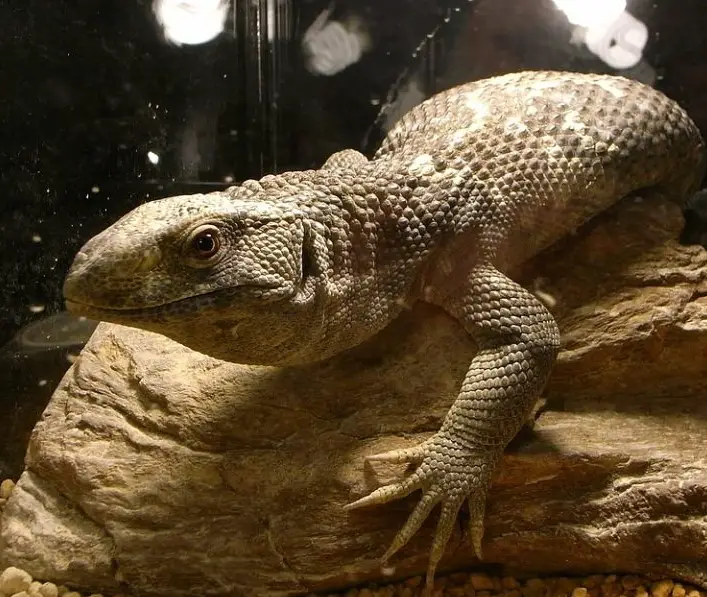
The belt of their distribution, capturing the south of the Sahara, stretches from Senegal to Ethiopia and Somalia. At the same time, the Cape variety can be seen near Congo, Cameroon, Guinea, Chad, Uganda, Kenya, Burkina Faso.
In the wild, these reptiles prefer to settle in shrouds, woodlands, as well as in open rocky areas, avoiding deserts and tropical jungles. Often the African population encounters steppe reptiles on lands that are agriculturally cultivated.
Life Span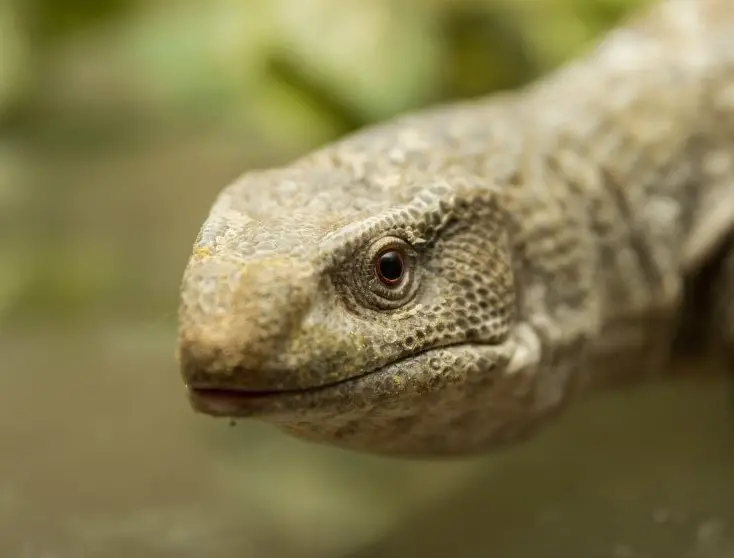
Domesticated Savannah Monitors live for about 10 years if properly maintained. It is difficult to judge the life expectancy of such reptiles in the natural environment since they are characterized by secretive behavior and prefer to catch the eye of anyone as rarely as possible. Most often, wild lizards hide in dense bushes or burrows. At the same time, they never build their own housing on their own, although they like to spend a lot of time exploring the dungeon and searching for ground prey.
Care at Home
In captivity, reptiles are threatened by obesity and a number of diseases associated with improper living conditions. To please your pet and not provoke its aggression, you need to take into account the requirements for the terrarium, food, as well as regular grooming procedures.
Choice and Arrangement of the Terrarium
Before you bring an African reptile into the house, you should take care of a cozy and spacious home for your pet. For these purposes, a horizontal terrarium or a special room with a pool, wooden climbing bars, and a cool area is suitable, because the reptile must move a lot. In the designated area, it is important to consider the following factors:
- the size of the terrarium for an adult lizard should correspond to 1.5–2 pet lengths (length and width within 2.6 m, and height – 80 cm);
- optimal air temperature – within 22-23 ° С;
- in the heating zone, the lamp can heat the air up to 40 ° C;
- humidity at the level of 65–70%;
- it is advisable to light it with the help of sunlight or special UV lamps designed to heat reptiles (the best option is Rep ti Glo 10 UVB);
- it is advisable to place a thermal mat or hot stone in the terrarium;
- in a cool corner, you can place several shelters in the form of wood logs with a devastated core, or old clay pots (keep in mind that such decorative elements complicate the socialization of the pet);
- there should always be clean water in the pool (you should be prepared for the lizard to defecate there when swimming);
- be sure to observe what suits your ward more – a warm bath or shower;
- as bedding for a terrarium, you can use sphagnum or sand with special treatment (artificial rugs are only suitable for temporary housing);
- Croton, fern, cacti, focuses, special moss, anthuriums will help to decorate the home of the domestic lizard.
Cleaning Frequency
Since reptiles love water and can sit in it for hours, extra care should be taken to keep the pool clean. In addition, these pets most often prefer to go to the toilet in the “bathroom”. Of course, this habit makes the daily cleaning of substrates and terrariums unnecessary. But at the same time, it is necessary to monitor the quality and freshness of the water, replacing it as needed.
Once a month, it is imperative to clean the reptile’s house. For this purpose, all decorations and vegetation are removed from the inside, after which all surfaces are thoroughly washed. The feeder and drinker require daily cleaning because dirty water or food debris can cause serious illness.
Feeding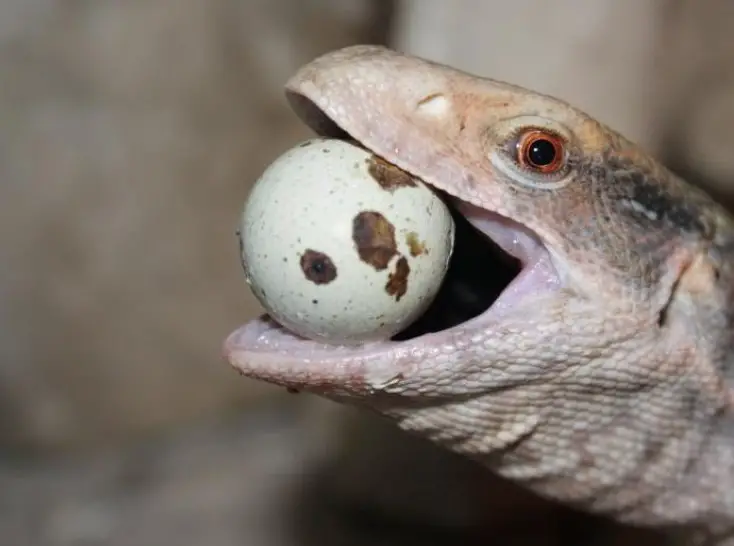
In captivity, the Savannah Monitor diet should not differ significantly from the usual. But very often such pets are forced to switch to small birds, rodents, meat products, and poultry eggs. As a result, very soon they begin to suffer from obesity, kidney failure, and liver disease.
Based on this, experts advise introducing into the reptile’s menu the usual frogs, snails, bronzes, beetles, mussels, shrimps, small fish, and insects, as well as monitor the amount of food eaten and the mobility of the animal. His tendency to accumulate fat reserves is associated with the seasons of activity when he can swallow about 13 kg of feed per day. But after that, in natural conditions, he lives for months without food.
Keep in mind that a healthy reptile has a good appetite, but it has limited space to find food. Regular feeding is not relevant to such a pet, because it is very phlegmatic and can lie under the lamp all day, waiting for the next portion.
Precautions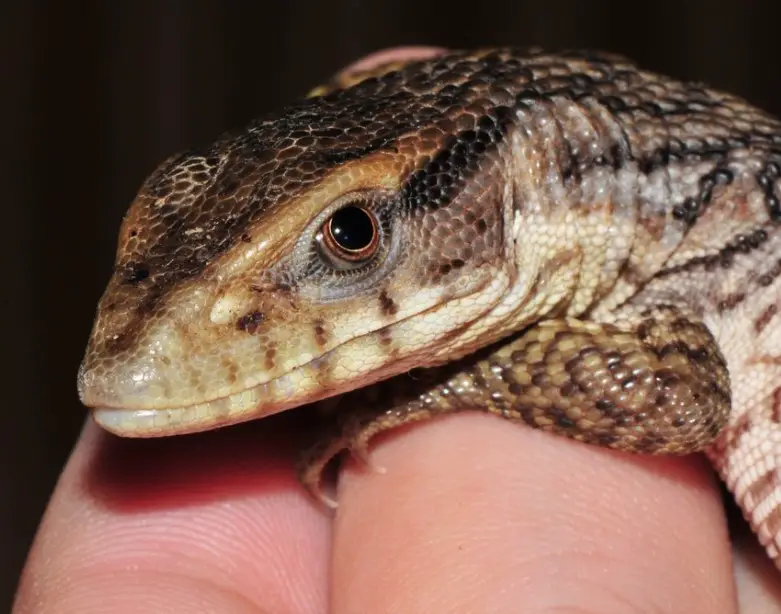
Savannah Monitors, in comparison with other species, get along well with people and lend themselves to quick socialization. However, at the slightest fright, they begin to hiss, swell and lift their tail to strike. If a person is close enough, he will not be able to avoid being bitten.
Even when playing, the lizard may hook the owner. Therefore, before bringing such an animal into the house, you should think carefully. And those who have already dared to do this should remember the following precautions in dealing with the ward:
- It is advisable to choose young lizards as a pet, which quickly adapt to the human neighborhood.
- In order for a reptile to get used to you, you need to stroke it as often as possible from an early age, take it in your arms for communication.
- It is also undesirable to contact him while eating.
- Always keep antimicrobial agents close to the cage, which should be used to treat wounds immediately in case of bites.
Conclusion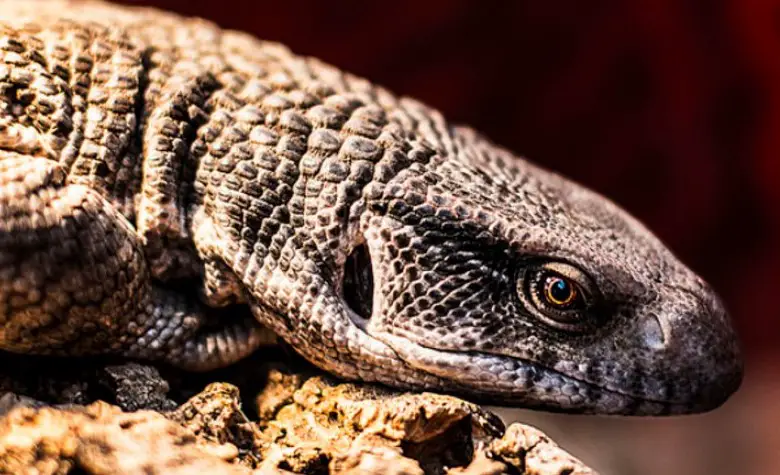
While the Savannah Monitors’ appearance inspires confidence, giving the illusion of the reptile’s absolute calm, it is still a wild predator. So he will remain until the end of his days. This should not be forgotten for a minute. Keep in mind that a lizard requires certain hygiene and appropriate conditions for keeping, in addition, adult reptiles take root in captivity much more difficult than juveniles. Weigh all the pros and cons and only after that make a decision about the advisability of such a choice.

